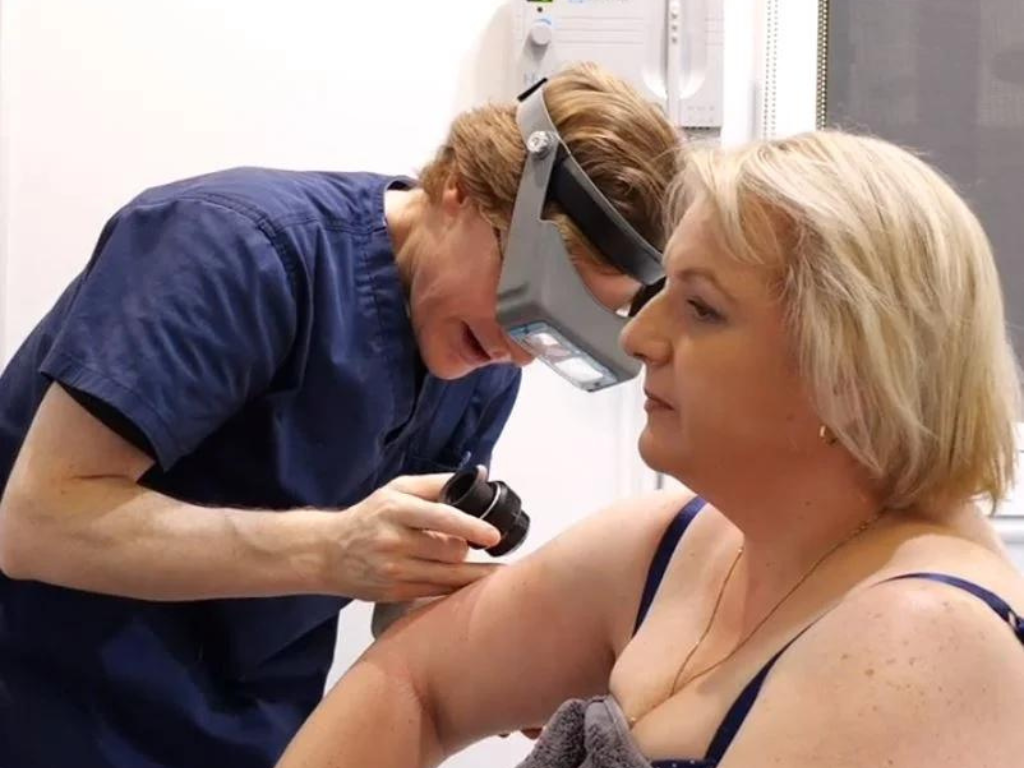What can I expect from a skin cancer check?
What’s involved in a skin cancer examination? Let’s walk through the entire quick and easy process so you know what to expect at your upcoming skin check.
Watch the full skin check process:
Before your appointment
Before your appointment, it’s important to double-check you’re prepared. Bring your Medicare and Concession cards and any documentation relating to your skin cancer history. Wear comfortable clothes and shoes that are easy to slip on and off, and please don’t wear makeup or nail polish. Take note of any moles or spots on your body that are new, changing or different from the rest, so you can let your doctor know.
Taking your medical and skin cancer history
To begin your appointment, your doctor will ask you some important questions about your personal and family skin cancer history and your lifestyle, such as how much time you spend in the sun. They will also assess your skin type and level of sun damage. This information helps your doctor to determine your skin cancer risk and identify any areas of concern. Your doctor will also ask you if there are any spots on your skin that worry you.
Total body photography for high-risk patients
Depending on your skin cancer risk, you may receive total body photography. For high-risk patients, this full-body digital mole photography is recommended as the best method to detect skin cancers accurately and early by monitoring changes over time through the comparison of a series of digital images of your entire skin surface.
Total body photography is performed by one of our practice clinicians and the images will serve as a baseline for future skin checks when they will be assessed by your doctor. Your total body photography appointment may be on a different day than your skin check appointment.
Your skin cancer examination
During the full-body skin exam, you will be required to undress to your underwear. A gown or blanket can be provided for your comfort. The doctor will examine your head, face, neck torso, legs, feet, toes, arms, hands, and fingers with a dermatoscope while you’re sitting and lying down. Genital areas are not routinely examined, so you should inform your doctor about any suspicious spots under your underwear.
The skin cancer check takes between 15 to 30 minutes and is entirely painless. Your doctor has a wealth of experience, skills and recognised certifications in skin cancer medicine. As they dedicate their practice to the detection and treatment of skin cancers, the doctors in our network of purpose-built skin cancer clinics diagnose nearly thirty thousand skin cancers every year! They utilise the latest tools in skin cancer detection, including dermoscopy (a small handheld tool like a skin microscope) to see beneath the skin and identify any suspicious cell changes that are invisible to the naked eye – even very early signs of skin cancer!
What happens after the skin check?
Your doctor will tell you straight away if your skin cancer check uncovers any moles or spots which require a biopsy, which means that a small sample of skin is removed for further testing at a pathology laboratory to confirm your diagnosis.
After your skin check, don’t forget to book your follow-up appointment based on your doctor’s recommendations! As 99 per cent of skin cancers are curable if detected and treated early, regular skin cancer checks are your best defence against complex surgeries, costly procedures, and even death. Experts recommend that most Australians get a skin check once a year – it could save your life.

